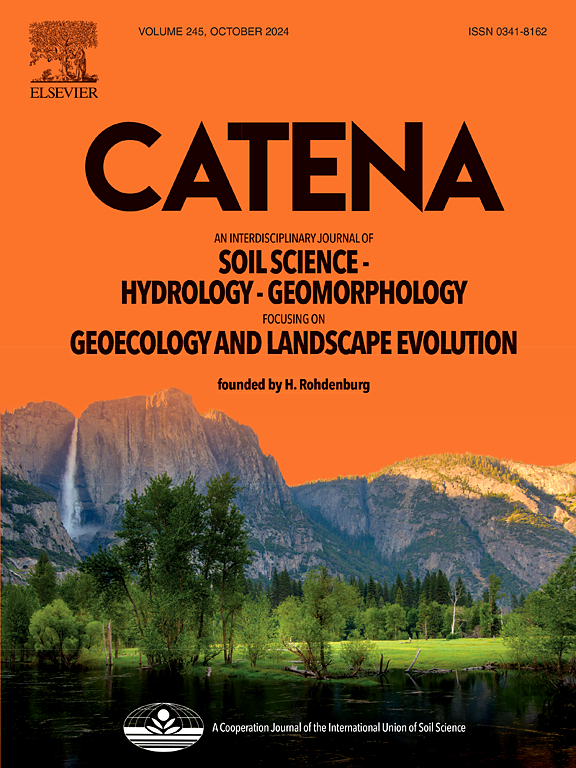Gully erosion development during an extreme flood event using UAV photogrammetry in an arid area, Iran
Mirzaee, Somayeh , Pajouhesh, Mehdi , Imaizumi, Fumitoshi , Abdollahi, Khodayar , Gomez, Christopher
2024-11-01 null null 246(卷), null(期), (null页)
Gully erosion presents an environmental challenge in many arid landscapes, exerting profound effects on land stability, agricultural viability, and ecological equilibrium. Despite its importance, empirical data are limited due to the rarity of extreme hydrological events. To address this data gap, our study provides a comprehensive analysis of the Dashtiarigully, the largest gully system in Iran, using UAV-based photogrammetry. Pre-flood, the UAV ground resolution was 3.88 cm/pixel with a DEM accuracy of 7.76 cm/pixel, and post-flood, the UAV resolution was 5.61 cm/pixel with a DEM accuracy of 11.2 cm/pixel. These measurements were rigorously calibrated using GNSS-PPK Ground Control Points. Our research reveals significant changes in gully morphology and sediment dynamics following an extreme flood event with a 200-year recurrence interval. The quantified data delineate a total soil erosion volume of 2,258,258 m(3) and a corresponding sedimentation volume of 1,415,964 m(3) within a 6 km(2) catchment area. Notably, the downstream sections of the catchment exhibited increased erosion and deposition activity compared to the upstream regions. Morphometric changes were evident, with the average width of the primary gully channel increasing from 31.9 m pre-flood to 57.9 m post-flood, and the average depth rising from 1.5 m to 3.5 m. The main channel exhibited greater sedimentation and erosion volumes compared to the upstream branches, likely due to increased flow velocity and energy. Furthermore, the confluence zones between tributaries experienced significant channel widening and deepening post-flood. In contrast, the interfluve areas, particularly those under agricultural use, displayed extensive sediment deposition. These findings have important implications for sustainable land management and ecological restoration efforts in arid regions prone to intense flood events.
相关推荐
- Improving vegetation spatial distribution mapping in arid and on coastal dune systems using GPR in Tottori Prefecture (Japan) [2024-11-01]
- Image Classification and Land Cover Mapping Using Sentinel-2 Imagery: Optimization of SVM Parameters [2024-11-01]
- Assessment of the Relationship Between NDVI-Based Actual Evapotranspiration by SEBS [2024-11-01]
- Spatial-Temporal Simulation of LAI on Basis of Rainfall and Growing Degree Days [2024-11-01]
- Groundwater recharge estimation under semi arid climate: Case of Northern Gafsa watershed, Tunisia [2024-11-01]



